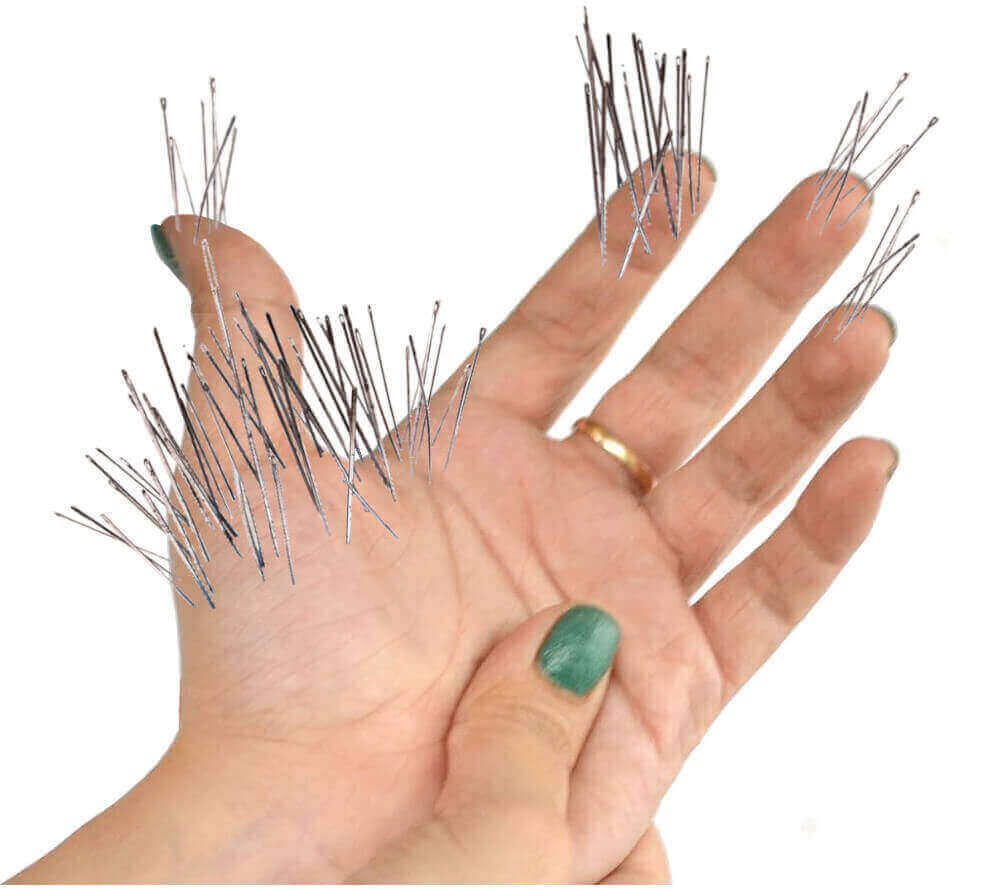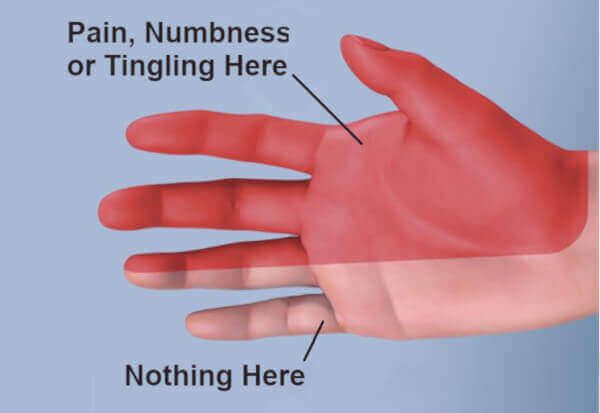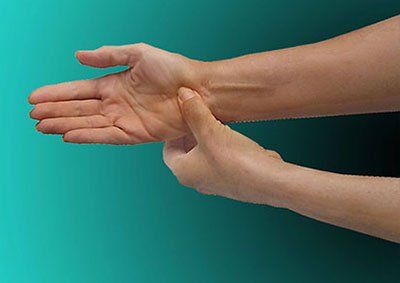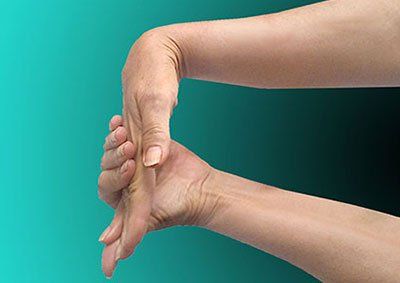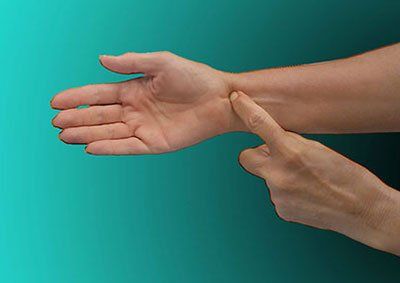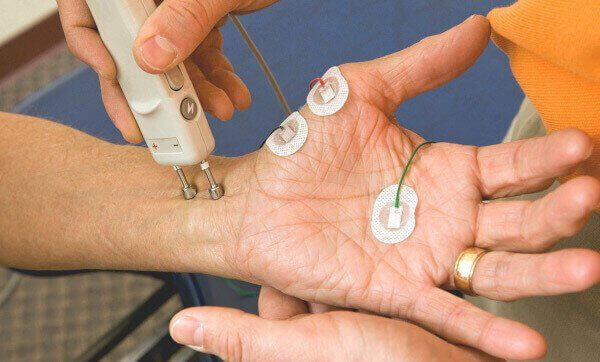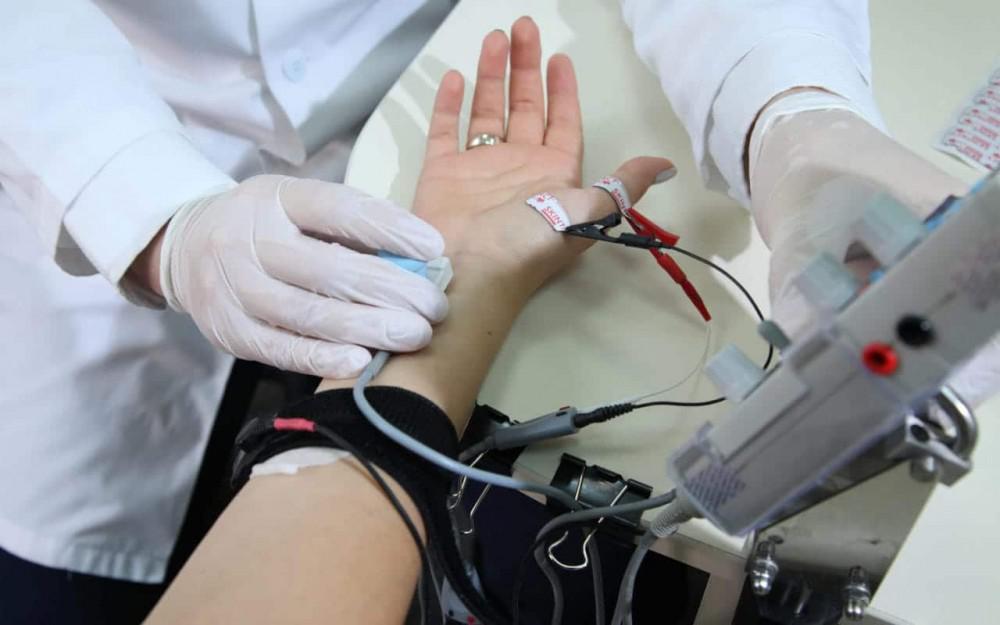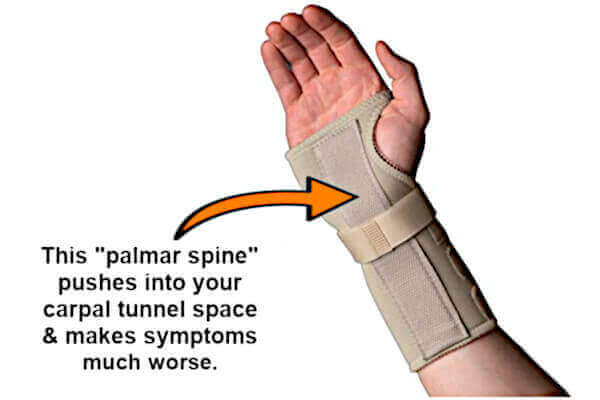How Carpal Tunnel is Diagnosed
Table of Contents
- Overview
- Signs & symptoms of carpal tunnel syndrome
- Primary signs
- Initial warning signs
- Signs carpal tunnel is advancing
- Who's at risk for carpal tunnel syndrome?
- Risk factors
- Professions at highest risk
- Getting the proper diagnosis
- How carpal tunnel is diagnosed with provocative tests
- Durkan test
- Phalen test
- Tinel test
- How carpal tunnel is diagnosed with electrodiagnostic tests
- Nerve conduction test
- Electromyography (EMG) test
- Non-surgical treatments for carpal tunnel syndrome
- Brace you wrist at night
- Rest you hand
- Exercise you fingers and hand
- Massage your wrist area
- Summary
- FAQs
- About
Overview
This article explains how carpal tunnel is diagnosed. If you have carpal tunnel syndrome, a proper diagnosis is the very first step in treating this condition.
Usually, a doctor will perform the diagnosis. You can also perform an accurate diagnosis on yourself using some of the same methods the doctor uses - and described here.
There are two kinds of diagnostic tests for carpal tunnel syndrome. They are:
- Provocative tests
- Electrodiagnostic tests
The provocative tests are simple-to-do physical exams -- and this article will teach you how. Carpal tunnel is easily diagnosed using these tests. In fact, you can perform them on yourself. By pushing and tapping in the correct areas of your wrist and forearm, you can "provoke" symptoms to appear. Only patients with carpal tunnel syndrome will show a positive response.
Once the the provocative tests confirm carpal tunnel, doctors often use electrodiagnostic tests for "double verification". They are are composed of the EMG (electromyographic) test and the nerve conduction test. But you cannot do thee tests on yourself. A doctor must perform them in their office because they require specialized equipment and training.
This two-step testing process insures you get the proper diagnosis. After all, you don't want to
treat carpal tunnel syndrome if you actually have another condition!
In this article, you'll learn how the tests are performed. You'll also learn what you might expect during testing and the meaning of your results.
Signs & symptoms of carpal tunnel syndrome
Primary signs
Before understanding how carpal tunnel is diagnosed, it's necessary to establish whether you have the symptoms or not. The signs and
symptoms of carpal tunnel syndrome are different for everybody. But they follow a general pattern.
Carpal tunnel syndrome will usually give you the following sensations in your palm, wrist, and fingers. The diagram below shows you the location of these sensations.
Initial warning signs
When carpal tunnel syndrome first begins, it usually only appears when your hand is resting. In fact, most patients only feel symptoms when they're trying to sleep. It will wake them, with the need to rub out the pain or shake out the numbness.
Tip: This is what distinguishes early carpal tunnel symptoms from those of
tendonitis. Tendonitis pain or numbness occurs only when the hand is working, not at rest.
Early signs of carpal tunnel can also appear as a clumsy hand. It might feel awkward to button a shirt, tie a shoelace, or open a car door. You have to concentrate more while picking up coins or keys.
Tightly gripping an object (like a coffee mug) may cause shooting electric shocks. Raising your hand at or above your head (like holding a phone to your ear) may cause numbness or tingling in your fingertips.
Signs carpal tunnel is advancing
As carpal tunnel syndrome advances, so do the symptoms. Usually, the condition is largely ignored up to this stage. Most often, it's only when symptoms become annoying or painful that carpal tunnel is diagnosed. Unfortunately, these are also the more advanced stages, when effective treatment is more challenging.
In essence, advanced symptoms are the same as those listed above. But more advanced carpal tunnel means the symptoms are more intense or severe. Using your hand becomes more and more difficult. This means writing with a pen,
holding a steering wheel, or cooking requires extra care and vigilance.
Your hand's
grip strength is usually compromised. That means constantly dropping things. Some people lose the ability to pick up grocery bags or infants.
As carpal tunnel syndrome progresses further, most patients lose the ability to sense hot or cold at their fingertips. This makes cooking dangerous because holding a knife safely is compromised, and so is sensing a hot stove.
These are characteristics of
severe stage carpal tunnel syndrome. Patents use terms for the pain or numbness as cruel, punishing or crushing. They often say they feel like cutting off their hand to end the misery.
About 80% of patients will begin to see signs of carpal tunnel syndrome on the other hand within 6 months. This is known as
bilateral carpal tunnel syndrome.
Finally, without treatment the hand enters the "end stage" of carpal tunnel syndrome. It's when the median nerve has degenerated irreversibly. Basically, the median nerve is dead, and this also causes the thumb muscles to die.
You can visibly see the thumb muscle flattened out as they waste away (atrophy). Gripping function is lost. In most patients, the hand eventually forms a "claw" due to the loss of muscle control (called "claw hand").
Who's at risk for carpal tunnel syndrome?
Risk factors
There are certain risk factors for acquiring carpal tunnel syndrome. They are
Professions at highest risk
According to the CDC and OSHA, the professions listed below are well-known to have a higher incidence of workers with carpal tunnel syndrome. That's because all of them engage in daily
harmful hand activities.
Getting the proper diagnosis
Carpal tunnel syndrome is one of the most
frequently misdiagnosed disorders. In fact, some studies show that over
70% of patients receive an
incorrect diagnosis.
That means these patients are told they have carpal tunnel syndrome when they actually have a different disorder. The result?
Over 70% of patients who have carpal tunnel surgery never needed it!
For this reason, the way carpal tunnel is diagnosed is often debated. Doctors struggle with using only the provocative tests versus the provocative tests
PLUS
the electrodiagnostic tests.
Performing this "double verification" diagnosis can eliminate disorders that have similar symptoms. These are the disorders many patients actually have, instead of carpal tunnel syndrome. They include:
How carpal tunnel is diagnosed with provocative tests
As a first step, carpal tunnel is diagnosed using the Durkan, Phalen, and Tinel tests. These provocative tests are designed to determine if your symptoms can be "provoked". Provoking them means you are positive for carpal tunnel syndrome.
This is the very first exam a doctor will give you in their office. If they show you're positive, the provocative tests are normally followed by the electrodiagnostic tests.
To perform these tests on yourself, see
specific instructions here. It's best to have a partner help you. The partner can perform each test so you can relax and concentrate on the symptoms. This insures accuracy.
Durkan test
Phalen test
Tinel test
How carpal tunnel is diagnosed with electrodiagnostic tests
When your provocative tests are positive for carpal tunnel syndrome, you doctor will order electrodiagnostic tests. They are used to confirm the results of the provocative tests.
If they are used alone for a diagnosis (without the provocative tests) they risk giving "false positive" results. Also, by themselves, the electrodiagnostic tests are
not more accurate than the provocative tests.
Exactly how carpal tunnel is diagnosed with electrodiagnostic tests is a complex process. The tests are performed under the supervision of your
carpal tunnel doctor. They require specialized electronic equipment and special training for the technologist.
The electrodiagnostics tests are usually performed in 2 parts. They are the:
- Nerve conduction test
- Electromyographic test (or EMG)
Nerve conduction test
Electromyography (EMG) test
Non-surgical treatments for carpal tunnel syndrome
Now that you have a confirmed diagnosis of carpal tunnel syndrome, what do you do?
The
American Academy of Orthopedic Surgeons maintains a policy about
carpal tunnel surgery. They advise
carpal tunnel doctors to resort to surgery only after
all nonsurgical options
have been exhausted. The reason?
It's because many nonsurgical options are safe and effective. In fact, nonsurgical remedies are successful in over
90% of patients. In comparison, by the second year, carpal tunnel surgery has about 50% success rate.
The key nonsurgical treatments usually recommended are Bracing, Rest, Exercises, and Massage.
- Brace your wrist and hand while you sleep
- Rest your hand as often as you can
- Exercise and stretch your fingers and hand
- Massage the area around your wrist
Brace your wrist at night
Rest your hand
Exercise your fingers & hand
Massage your wrist area
Summary
Knowing how carpal tunnel is diagnosed means understanding the 2 types of tests doctors use. They are
provocative tests and electrodiagnostic tests. The provocative tests attempt to provoke symptoms (or make them worse). If symptoms like pain, numbness, electric shocks, or tingling are felt, then it's a positive sign of carpal tunnel syndrome. When the provocative tests are positive, the doctor will usually order follow-up electrodiagnostic tests. There are two types: nerve conduction studies and electromyography or EMG. Both of them test the health of your median nerve using electrical impulses. Today, carpal tunnel is diagnosed using this "double verification" approach. While the provocative tests alone are usually sufficient evidence of carpal tunnel syndrome, electrodiagnostic tests
confirm
the findings.
With a diagnosis of carpal tunnel syndrome, patients are normally advised to use nonsurgical remedies first. The most useful ones are night bracing, rest, stretching exercises, and myofascial release massage. They are effective in relieving symptoms in most patients within 8 weeks.
FAQs
Which is the best diagnostic for carpal tunnel syndrome?
There is no one single best diagnostic tool. A proper diagnosis requires both provocative AND electrodiagnostics tests o confirm one another. However, the provocative tests, when performed by a specialist, are more accurate in diagnosing carpal tunnel than electrodiagnostic tests.
To the tests hurt?
Only the EMG test requires needles inserted into your thumb muscles. Patients generally consider the procedure as temporarily uncomfortable or painful.
When should I get an evaluation and diagnosis?
Don't wait! If you have carpal tunnel, it's a progressive disorder. That means it only gets worse with time. So don't delay in having an evaluation as soon as possible so you can begin therapy immediately.
About


